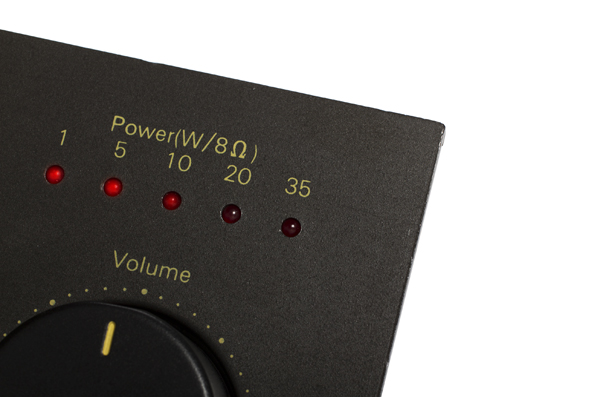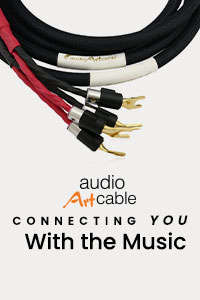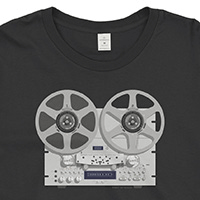NAD 3020 Integrated Amplifier
 I recently bought an original NAD 3020 integrated stereo amplifier for $66 on eBay. As soon as I hooked it up to my Dynaudio Contour 1.1 speakers, I remembered why the little amp took the audio world by storm in the late 1970s.
I recently bought an original NAD 3020 integrated stereo amplifier for $66 on eBay. As soon as I hooked it up to my Dynaudio Contour 1.1 speakers, I remembered why the little amp took the audio world by storm in the late 1970s.
My first encounter with NAD came when I worked as a high-end audio salesman at New York’s Sound By Singer. We started selling NAD receivers in 1978, a year before the 3020 was introduced. Japanese-designed and -manufactured brands of the time were gorgeous, and NAD’s gray plastic faceplates weren’t winning any beauty contests. That didn’t bother my customers one bit; they loved NAD’s simplicity and glitz-free appearance. In fact, young, hip audiophiles perceived NAD as the higher-quality alternative. But the sound is what really differentiated NAD from the majors. With NAD, you could feel like the engineers were running the show.
 What paired with the 3020, Snell Acoustics’ model J and K speakers, and to a lesser extent Boston Acoustic A40s, were popular with NAD customers, and there was a sprinkling of Rogers LS3/5A fan boys scooping up 3020s. And since the little amp was launched a couple of years before the compact disc arrived, the Rega Planar 2 served as the go-to turntable.
What paired with the 3020, Snell Acoustics’ model J and K speakers, and to a lesser extent Boston Acoustic A40s, were popular with NAD customers, and there was a sprinkling of Rogers LS3/5A fan boys scooping up 3020s. And since the little amp was launched a couple of years before the compact disc arrived, the Rega Planar 2 served as the go-to turntable.
The 3020 may have been rated at a mere 20 watts per channel, but it had 3 dB of headroom. Hence, it could deliver 40 watts into 8 ohm loads, 58 watts in 4 ohms, and 72 watts into 2 ohms for brief periods of time. I doubt you can find a receiver today that safely drives 2-ohm loads.
Peter Tribeman, NAD’s US president at the time of the 3020’s introduction, recalls the original demo at the Consumer Electronics Show. He hooked the 3020 up to four pairs of floor-standing AR speakers in parallel. The latter presented an absolutely brutal load (1.1 ohms) for the 3020, but the little amp experienced no problems. Crowds were amazed, and the feat was duplicated at many other 3020 demos, which established the brand as a serious player in a field dominated by giant Japanese electronics companies like Denon, Onkyo, Pioneer, Sony, and Yamaha. A few months later, the CES demo was repeated at the New York Hi-Fi Show. I wound up with a bunch of newly hatched audiophile customers sold on NAD.
 Tribeman, who currently runs Atlantic Technology and Outlaw Audio, also delights in revealing what he calls the “Benign Error,” which played a large role in the 3020’s allure. Strangely enough, it was a mistake in the layout of the original circuit board. According to Tribeman, the “Benign Error” produced unintended “L-R crosstalk,” which somehow generated more low-level detail and ambience. The “Benign Error” was eliminated in the second-generation 3020A model, and with it, some of the original’s appeal. More 3020As sold than 3020s. By the time Tribeman left the company, NAD had sold more than a half-million 3020s around the world.
Tribeman, who currently runs Atlantic Technology and Outlaw Audio, also delights in revealing what he calls the “Benign Error,” which played a large role in the 3020’s allure. Strangely enough, it was a mistake in the layout of the original circuit board. According to Tribeman, the “Benign Error” produced unintended “L-R crosstalk,” which somehow generated more low-level detail and ambience. The “Benign Error” was eliminated in the second-generation 3020A model, and with it, some of the original’s appeal. More 3020As sold than 3020s. By the time Tribeman left the company, NAD had sold more than a half-million 3020s around the world.
The Sound by Singer staff had high hopes for the 7020, the receiver version of the 3020. But that model had serious reliability problems—as did many NAD products that followed in its wake. Early CD players sounded exceptional for the money, yet they kept crapping out. NAD became plagued with quality-control issues through the 1980s and into the 1990s. However, some of its products escaped such a fate, which is probably why the company maintained a very positive reputation.
 Indeed, the biggest surprise of listening to my “new” 3020 came via the phono preamp. The sheer scale of the sound and dynamics were far beyond what I expected. It’s not the most neutral-sounding pre you’re going to find, and it’s not all that quiet. But the music’s weight and solidity make up for any transparency deficiencies. Or maybe it’s the midrange’s grainless ease that I find so beguiling—even tube-like. Tom Jones’ Praise & Blame studio LP is recorded live to analog tape, and the 3020 brings it all home. Jones may be in his 70s, but he isn’t taking any prisoners on the session. While the amp sounds sweet with CD, it really comes into its own with vinyl.
Indeed, the biggest surprise of listening to my “new” 3020 came via the phono preamp. The sheer scale of the sound and dynamics were far beyond what I expected. It’s not the most neutral-sounding pre you’re going to find, and it’s not all that quiet. But the music’s weight and solidity make up for any transparency deficiencies. Or maybe it’s the midrange’s grainless ease that I find so beguiling—even tube-like. Tom Jones’ Praise & Blame studio LP is recorded live to analog tape, and the 3020 brings it all home. Jones may be in his 70s, but he isn’t taking any prisoners on the session. While the amp sounds sweet with CD, it really comes into its own with vinyl.
Sure, a lot of my early NAD customers eventually moved up to higher-end gear and became card-carrying audiophiles. But the 3020 was the gateway drug that fueled their addiction. I can still hear why. -Steve Guttenberg





